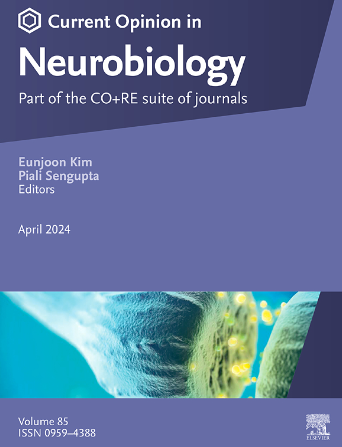Decoding neuronal diversity: Mechanisms governing neural cell fate in Drosophila
IF 5.2
2区 医学
Q1 NEUROSCIENCES
引用次数: 0
Abstract
Generating neuronal diversity from a limited number of neural stem cells is fundamental for the proper functioning of the brain. However, the mechanisms that govern neural fate determination have long been elusive due to the intricate interplay of multiple independent factors that influence a cell's commitment to specific fates. While classical genetics and labeling tools have laid the groundwork for identifying cell types and understanding neural complexity, recent breakthroughs in single-cell transcriptomics and whole-brain connectomics represent a significant advancement in enabling a comprehensive characterization of brain cell types and the underlying mechanisms that encode these neuronal identities. This review focuses on recent developments in our understanding of neural cell fate determination in Drosophila, emphasizing three key mechanisms: spatial patterning, temporal patterning, and neuron-type specific terminal selector transcription factors.
解码神经元多样性:控制果蝇神经细胞命运的机制
从有限数量的神经干细胞中产生神经元多样性是大脑正常运作的基础。然而,由于影响细胞对特定命运的承诺的多个独立因素的复杂相互作用,控制神经命运决定的机制长期以来一直难以捉摸。虽然经典的遗传学和标记工具已经为识别细胞类型和理解神经复杂性奠定了基础,但最近在单细胞转录组学和全脑连接组学方面的突破代表了在全面表征脑细胞类型和编码这些神经元身份的潜在机制方面取得的重大进展。本文综述了果蝇神经细胞命运决定的最新进展,强调了三个关键机制:空间模式、时间模式和神经元类型特异性末端选择转录因子。
本文章由计算机程序翻译,如有差异,请以英文原文为准。
求助全文
约1分钟内获得全文
求助全文
来源期刊

Current Opinion in Neurobiology
医学-神经科学
CiteScore
11.10
自引率
1.80%
发文量
130
审稿时长
4-8 weeks
期刊介绍:
Current Opinion in Neurobiology publishes short annotated reviews by leading experts on recent developments in the field of neurobiology. These experts write short reviews describing recent discoveries in this field (in the past 2-5 years), as well as highlighting select individual papers of particular significance.
The journal is thus an important resource allowing researchers and educators to quickly gain an overview and rich understanding of complex and current issues in the field of Neurobiology. The journal takes a unique and valuable approach in focusing each special issue around a topic of scientific and/or societal interest, and then bringing together leading international experts studying that topic, embracing diverse methodologies and perspectives.
Journal Content: The journal consists of 6 issues per year, covering 8 recurring topics every other year in the following categories:
-Neurobiology of Disease-
Neurobiology of Behavior-
Cellular Neuroscience-
Systems Neuroscience-
Developmental Neuroscience-
Neurobiology of Learning and Plasticity-
Molecular Neuroscience-
Computational Neuroscience
 求助内容:
求助内容: 应助结果提醒方式:
应助结果提醒方式:


